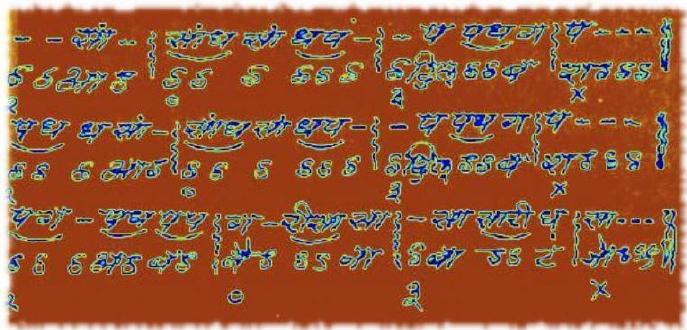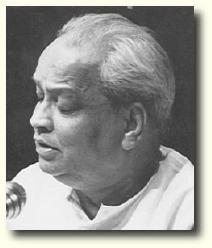Sunil Mukhi's Indian Music Page

|
| introduction |
|---|
| The term "Indian
Classical Music" refers to two related, but distinct,
traditions rooted in antiquity. Both are very much alive in
India today. The North Indian style is known as
"Hindustani", while the South Indian tradition is referred
to as "Carnatic".
This page deals mainly with Hindustani Classical Music, about which I
know a little bit. While I also appreciate Carnatic
music, I do so as an outsider. What is Hindustani Classical Music? Like any kind of music, it is hard to say in a few words. But let me try, in case the reader is totally unfamiliar with this music. The basic scale of Hindustani music is similar to the western 12-note scale. The main difference is that the Hindustani scale is not tempered. Thus, the intervals between consecutive notes are not equal. Indeed, they can be varied slightly to suit the particular raga that is being performed. The same note, in different ragas, may have slightly differing positions. The notes themselves have names as in Western music, and here they are:
These seven notes are like the white keys on a piano keyboard. There are intervals between them: to be precise, there are five intermediate notes. The one between Sa and Re is called "Komal Re" (like Re flat), between Re and Ga is "Komal Ga" (like Mi flat), between Pa and Dha is "Komal Dha" (like La flat), and between Dha and Ni is "Komal Ni" (like Si flat). That accounts for four notes. The fifth lies between Ma and Pa but it is called "Tivra Ma", like Fa sharp. The final result is shown here:
The four notes marked "Komal" and the one marked "Tivra" correspond to the black notes on a piano keyboard. What, then, is a Raga? It is most simply described as a subset of these notes, usually from five to eight notes, together with a set of rules to combine them effectively and create a particular mood. Each Raga has a name. It also has a character, which can be devotional, erotic, bold and valorous, or tragic, to name some examples. And a Raga usually comes with a time of day when it is best performed, usually specified as a 3 hour interval (6 AM to 9 AM, 9 AM to noon, etc.). Some Ragas are related to seasons, for example the Malhar ragas are performed mainly in the monsoon season, and then they can be sung at any time. Given a Raga, there exist several compositions, more or less like songs (with words), which obey the rules of that Raga and effectively convey its mood. It is common for the words to assist in conveying the mood. For example, monsoon-related Ragas will have compositions that describe the gathering clouds, the falling raindrops, the lightning and thunder, and the accompanying erotic mood (if you've never been to India you may wonder about this one, but it is so). A vocal musician will sing the notes of the raga in various combinations, then recite the composition and perform variations on it, often switching to a faster composition after some time. The whole thing can last an hour, or even two, and it is never monotonous because different types of variations are introduced at different stages. The success of the performance depends on how effectively the musician builds up the desired mood. Some Ragas are considered "light" in that they have less richness of structure, and are performed for shorter durations like 10-15 minutes. That's more or less all I have to say about it here, but in practice this music is too fantastic for words, and needs to be experienced. For me personally, this music has gone a long way towards opening up the sublime aspects of the world we live in. I did give a slightly longer explanation about Hindustani music to an audience of String Theorists, in a lecture at the Strings 2001 conference in Mumbai. You can hear that lecture and view the accompanying transparencies by clicking here. Below, you will find a link to the Kumar Gandharva Home Page. This is the only original material about music on my website other than the above. After that, you will find a collection of links to interesting pages on Indian Classical Music. This material has now undergone revision and updating. It is not intended to be exhaustive - I've only included the sites that I liked to some extent.
|

|
|
|
|
| Last Updated: June 1, 2011 |